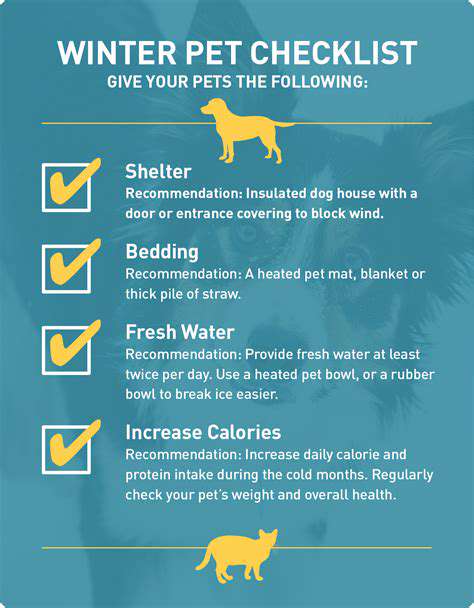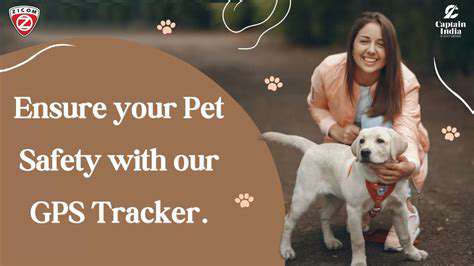Lost Pet Prevention: Steps to Take Before It Happens
Training and Familiarization: Educating Your Pet for Safety
Understanding Your Pet's Needs
One of the most overlooked aspects of keeping your pet safe is truly grasping their individual quirks and tendencies. Every animal has its own personality—some are natural explorers, while others prefer the comfort of familiar spaces. Recognizing these traits allows you to anticipate risky behaviors before they lead to an escape. For instance, high-energy breeds like Border Collies or Siberian Huskies may need more structured outlets for their curiosity compared to laid-back breeds. Pay close attention to how your pet reacts to open doors, unfamiliar sounds, or new people. These observations will help you customize their training and environment to minimize the urge to wander.
Basic Obedience Training: A Foundation for Safety
Commands like stay, come, and leave it aren’t just tricks—they’re lifelines. A dog that reliably responds to come in a distracting environment is far less likely to bolt after a squirrel or stray into traffic. Start training early, even with puppies, using positive reinforcement like treats or praise. Short, frequent sessions (5-10 minutes) work better than marathon drills. For example, practice stay during mealtime by having your pet wait calmly before eating. Over time, this builds impulse control and reinforces your role as their guide. Remember, consistency is key: use the same cues and rewards every time to avoid confusion.
Familiarization with the Surroundings: Building a Sense of Security
Pets are creatures of habit. The more familiar they are with their environment, the less likely they are to panic or wander. Take leashed walks around your neighborhood regularly, letting them sniff landmarks like mailboxes or trees. This creates a mental map of safe zones. If your yard is fenced, spend time there together so they associate it with play and relaxation. Strange noises (like garbage trucks or fireworks) can spook pets, so gradually expose them to these sounds at a distance while offering treats to build positive associations.
Safeguarding Your Home: Preventing Opportunities for Escape
Conduct a thorough pet audit of your home. Check for loose fence boards, gaps under gates (even small ones—cats can squeeze through spaces as narrow as 2 inches!), and unlatched windows. Install childproof locks on screen doors, as many pets learn to push them open. For indoor cats, consider window perches with secure mesh instead of open screens. If you have a digger, bury chicken wire along the fence line or place large rocks at the base. Simple fixes like these can eliminate 90% of escape routes.
Outdoor Training and Supervision: Mastering Safe Exploration
Start outdoor training in a controlled space, like a fenced yard or quiet park. Use a long leash (15-30 feet) to give freedom while maintaining control. Practice recall commands when they’re distracted—call their name excitedly and reward them for returning. Gradually introduce more challenging environments, like busier parks, but always keep them leashed until their recall is bulletproof. For off-leash areas, equip them with a GPS collar (like Fi or Whistle) as an extra safeguard. Never leave pets unsupervised outside, even in fenced areas; it only takes a moment for a determined escape artist to find a way out.
Emergency Preparedness: Creating a Plan for Prevention
Microchipping is non-negotiable—it’s the single most reliable way to prove ownership if your pet is found. Ensure the chip is registered with up-to-date contact info. Pair it with a sturdy collar tag displaying your phone number. Create a lost pet kit: recent photos (showing unique markings), flyer templates, and a list of local shelters/vets to contact immediately. Teach neighbors and regular visitors (like mail carriers) your pet’s name so they can call them if spotted. If your pet does escape, search in concentric circles starting from the last known location—most dogs stay within a 1-mile radius, while cats often hide nearby in silence.
Building a Strong Safety Network: Community Awareness and Cooperation
Understanding the Importance of Community Involvement
When an entire neighborhood watches out for pets, recovery rates skyrocket. Start by introducing your pet to neighbors—they’re more likely to recognize and approach a familiar animal if it’s loose. Join or create a community group (Nextdoor, Facebook) dedicated to lost pets. Share tips like training resources and the importance of checking storm drains (a common hiding spot for scared pets). Organize quarterly pet safety days where residents can get free ID tags scanned or learn emergency protocols. A single posted flyer has led to 33% of lost dog reunions, proving that grassroots efforts work.
Implementing Effective Search Strategies
Time is critical in lost pet cases. Within the first 12 hours, mobilize a search team with specific assignments: some should canvas streets on foot, others should check local cameras (doorbells, gas stations), while someone monitors shelter intake lists online. Use scent trails—place the pet’s bedding or your worn clothing outside to lure them home. At night, use flashlights to catch eyeshine in hiding spots. For shy pets, set up a humane trap with food near the last sighting. Update all channels hourly; misinformation spreads fast during searches.
Fostering Partnerships and Resources
Partner with local businesses to display lost pet posters in high-traffic areas. Vets and groomers often allow lost pet bulletin boards. Build relationships with animal control officers—they can prioritize your case if they recognize your pet’s description. Collaborate with drone enthusiasts for aerial searches in wooded areas. Maintain a shared Google Drive with templates for flyers, legal guidelines for entering properties during searches, and a map of confirmed sightings. Communities with organized pet networks see 40% faster reunions than those relying solely on individual efforts.
Read more about Lost Pet Prevention: Steps to Take Before It Happens
Hot Recommendations
- Holistic Pet Health: Integrating Approaches
- The Future of Pet Identification: Biometric Scanners
- Service Dogs for PTSD: A Guide to Support
- The Benefits of Non Anesthetic Professional Teeth Cleaning
- Herbal Supplements for Pet Joint Health
- The Intersection of IoT and Pet Wellness
- Healthy Weight Management for Senior Pets
- The Best Pet Beds for Orthopedic Support and Comfort
- Competitive Dog Sports: Agility, Flyball, Dock Diving
- Luxury Pet Hotels: Pampering Your Beloved Pet











